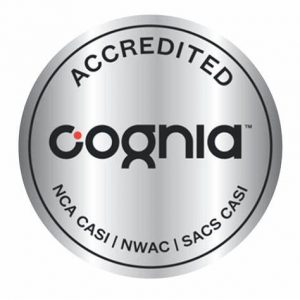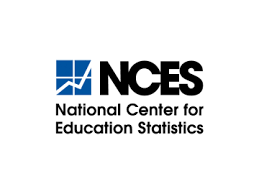The purpose of School Planning & Research website is to: provide commonly used data in an easily accessible form; disseminate focused reports intended to enrich our collective understanding of the continuous improvement planning process; and facilitate the school’s mission. The goal is to support school planning, decision-making, and continuous improvement through a comprehensive, integrated program of assessment, evaluation, growth strategies, and research.
Cognia Accreditation
Welcome to East Columbus Jr/Sr High School – an institution of excellence! We are thrilled to announce that our school is officially accredited by Cognia, a prestigious recognition that highlights our commitment to providing exceptional education and fostering a nurturing learning environment.
Cognia accreditation is a testament to the dedication of our talented educators, staff, and students who continuously strive for academic excellence, personal growth, and community involvement. With this esteemed accreditation, we stand proud in our mission to empower every student with the knowledge, skills, and values necessary to thrive in an ever-changing world. 
At East Columbus Jr/Sr High School, we believe that education is the foundation of a successful future, and this accreditation from Cognia further solidifies our position as a leading educational institution. As we continue on this journey of excellence, we remain steadfast in our commitment to providing innovative teaching methods, fostering a culture of inclusivity, and promoting a passion for lifelong learning.
Here are some of the benefits of being accredited by Cognia:
- Increased confidence in the quality of our education
- Greater opportunities for collaboration with other accredited schools
- Enhanced visibility and reputation
- Improved access to funding and resources
We are proud to be a Cognia-accredited school, and we look forward to continuing to provide our students with a high-quality education.
North Carolina School Report Card
The North Carolina School Report Card is a comprehensive report that provides information about a school’s academic performance, student demographics, and school climate. The report card is designed to help parents, educators, and policymakers make informed decisions about schools.
The School Performance Grade is a letter grade that is assigned to each school based on a number of factors, including student achievement on standardized tests, graduation rates, and other school-level data. 
The report card also includes information about student demographics, such as the percentage of students who are eligible for free or reduced-price lunch, the percentage of students who are English language learners, and the percentage of students who are from low-income families. This information can be used to understand the challenges that some students face and how the school is working to meet their needs.
The report card also includes information about school climate, such as the percentage of students who feel safe at school, the percentage of students who are engaged in learning, and the percentage of students who feel like they belong at school. This information can be used to understand how the school is creating a positive learning environment for all students.
The North Carolina School Report Card is a valuable resource for parents, educators, and policymakers. The report card provides information that can be used to make informed decisions about schools and to help ensure that all students have access to a high-quality education.
National Center for Education Statistics
The National Center for Education Statistics (NCES) is a federal agency that collects and analyzes data related to education in the United States. NCES provides a wealth of information about high schools, including data on enrollment, graduation rates, test scores, and teacher qualifications. This data is used by policymakers, researchers, and educators to make decisions about how to improve high schools. 
Some of the specific high school data that NCES collects includes:
- Enrollment data: This data shows how many students are enrolled in high school, by grade level, race/ethnicity, and gender.
- Graduation rates: This data shows the percentage of students who graduate from high school within four years.
- Test scores: This data shows how students perform on standardized tests, such as the SAT and ACT.
- Teacher qualifications: This data shows the level of education and experience of high school teachers.
NCES also collects data on other aspects of high school education, such as school funding, school choice, and school safety. This data can be used to understand the challenges and opportunities facing high schools today.
The NCES data on high schools is a valuable resource for policymakers, researchers, and educators. This data can be used to make informed decisions about how to improve high schools and ensure that all students have access to a high-quality education.
Here are some of the benefits of using NCES data:
- It is comprehensive and up-to-date.
- It is free to use.
- It is easy to access and analyze.
- It can be used to compare schools across the country.
If you are interested in learning more about ECJSHS NCES data on high schools, you can visit this link.
School Improvement Planning and NCStar
School Improvement Planning is more than a plan, it is a framework for change. The plan, itself, is simply a map that identifies the school’s destination and requires both decision-making and action from a variety of stakeholders to reach that destination in the most direct route. As Dr. Sam Redding wrote in The Mega System Handbook, “high-functioning schools and schools cited for their effectiveness do the right things, do them continuously, and always look for ways to improve. Schools that fail with comprehensive school reform do so not for lack of resources, other than time, but for want of determination and internal discipline.”
NCStar is a web-based tool that guides a district or school team in charting its improvement and managing the continuous improvement process. NCStar builds accountability as well as helps schools track their improvement plans. NCStar is premised on the firm belief that district and school improvement is best accomplished when directed by the people, working in teams, closest to the students.
NCStar requires a “culture of candor” in which district and school personnel talk openly and honestly about their professional practices that contribute to student learning.
Since school improvement is such a unique process for each school, NCStar contains over 100 research-based effective practices (indicators) and allows schools flexibility to personalize their school improvement plans to meet their distinct needs.
NCStar brings all stakeholders into the continuous improvement process by allowing “view-only” capability and “real-time” transparency of the school improvement plan process to all staff, district personnel, school board members, and parents.
East Columbus Jr-Sr HS School Improvement Plan
EdNC Profile for Columbus County Schools
The EdNC profile for Columbus County Schools provides a comprehensive overview of the district’s performance. The profile includes information on student achievement, graduation rates, school climate, and financial performance.
The EdNC profile for Columbus County Schools is a valuable resource for parents, educators, and policymakers. The profile provides information that can be used to make informed decisions about the district and to help ensure that all students have access to a high-quality education.
Columbus County Attainment Profile
The Columbus County Attainment Profile is a report that provides information about the educational attainment of adults in Columbus County, North Carolina. The report was created by myFutureNC, a statewide initiative that is working to increase educational attainment in North Carolina.
The Columbus County Attainment Profile is a valuable resource for policymakers, educators, and community leaders. The report provides information that can be used to make informed decisions about how to improve educational attainment in Columbus County.
The Columbus County Attainment Profile is a valuable resource for anyone who is interested in improving educational attainment in Columbus County. The report provides information that can be used to make informed decisions about how to close the achievement gap and ensure that all adults have the opportunity to succeed.
Columbus County Census Reporter Profile
The Columbus County Census Reporter Profile is a comprehensive overview of the county’s demographics, economy, and social characteristics. The profile is based on data from the U.S. Census Bureau and other sources.
The profile shows that Columbus County is a diverse county with a population of over 60,000 people. The county is home to a large African American population, as well as significant Hispanic and Native American populations.
The profile also shows that Columbus County is a relatively poor county. The median household income in the county is about $35,000, which is below the state average. The county also has a high poverty rate, with over 15% of the population living below the poverty line.
Despite its challenges, Columbus County is a growing county. The population has been growing steadily in recent years, and the county is home to a number of industries, including agriculture, manufacturing, and tourism.
The Columbus County Census Reporter profile is a valuable resource for anyone who is interested in learning more about the county. The profile provides information that can be used to make informed decisions about the county’s future.
The profile also includes information about the county’s economy, education, and healthcare. This information can be used to understand the challenges and opportunities facing the county.
The Columbus County Census Reporter profile is a valuable resource for policymakers, businesses, and community leaders. The profile provides information that can be used to make informed decisions about the county’s future.
North Carolina Department of Commerce Commuting Profiles Report
The Commuting Profiles Report for Columbus County, North Carolina provides information about the county’s commuting patterns. The report was created by the North Carolina Department of Commerce and is based on data from the U.S. Census Bureau.
The report shows that Columbus County has a relatively high rate of commuting. About 70% of workers in the county commute to work outside of the county. The most common destinations for commuters are neighboring counties such as Brunswick, Bladen, and Robeson.
The report also shows that there are significant disparities in commuting patterns by race and ethnicity. For example, white workers are more likely to commute to work outside of the county than black workers.
The Commuting Profiles report is a valuable resource for policymakers, businesses, and community leaders. The report provides information that can be used to understand the challenges and opportunities facing the county’s workforce.
Here are some of the key findings of the report:
- The rate of commuting in Columbus County is relatively high.
- The most common destinations for commuters are neighboring counties.
- There are significant disparities in commuting patterns by race and ethnicity.
The report also includes recommendations for how to improve commuting in Columbus County. These recommendations include:
- Investing in public transportation
- Promoting telecommuting
- Developing more job opportunities in the county
The Commuting Profiles report is a valuable resource for anyone who is interested in improving commuting in Columbus County. The report provides information that can be used to make informed decisions about how to create a more efficient and equitable transportation system.
Area Profile for Columbus County
The mission of the North Carolina Department of Commerce is to improve the economic well-being and quality of life for all North Carolinians. To do that, the North Carolina Department of Commerce works closely with local, regional, national and international organizations to propel economic, community and workforce development for the state.
Area Profile for Columbus County
Data USA
Data USA is a website that provides access to U.S. public data. The website was created by the White House Office of Science and Technology Policy and is hosted by the U.S. Census Bureau.
Data USA provides data on a variety of topics, including demographics, economy, education, healthcare, and transportation. The data is available at the national, state, county, and city levels.
Data USA is a valuable resource for policymakers, businesses, and community leaders. The data can be used to understand the challenges and opportunities facing communities across the country.
Here are some of the key features of Data USA:
- The data is easy to access and use.
- The data is up-to-date and accurate.
- The data is available at multiple levels of geography.
- The data can be used to compare different communities.
Data USA is a free resource that is available to everyone. The website is a valuable tool for anyone who is interested in learning more about the United States.
Here are some of the benefits of using Data USA:
- It can help you to understand the challenges and opportunities facing your community.
- It can help you to compare your community to other communities.
- It can help you to make informed decisions about your community.
Data USA profile for Columbus County



